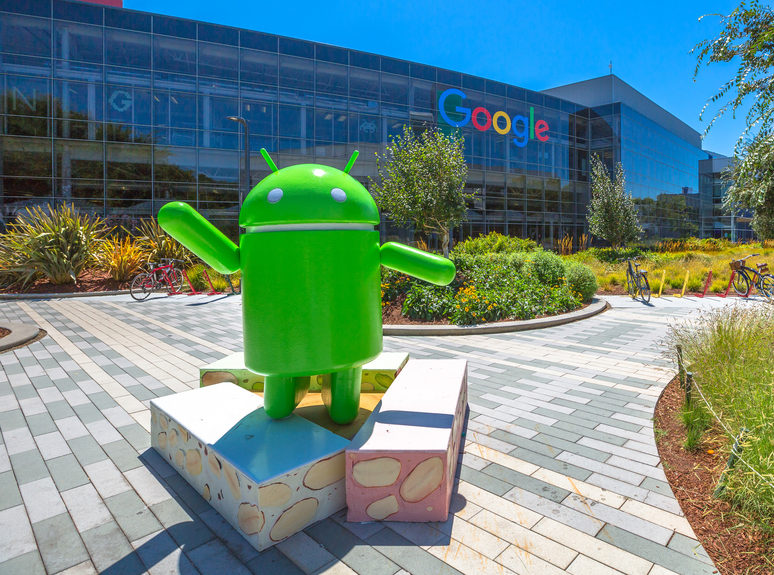Here's Which Android Phones Get Regular Security Updates
Forty-two different Android phones and tablets get regular security updates, Google says, and another 50 or so get them within 90 days.
Google has compiled a "nice" list of which smartphone and tablet models receive its monthly Android security updates, and — surprise! — Samsung leads the pack.

Samsung has 14 models listed, including its recent flagship phones the Galaxy S8, Galaxy S8+, Galaxy S7 and Galaxy S7 Active. As you'd expect, all of Google's recent devices make the cut, but so do models from lesser-known brands such as General Mobile, Gionee and Oppo.
The Google list, which was released yesterday (June 1) and which you can see here, isn't of which phones immediately receive the updates — only Google's own phones do so — but those models "with a majority of deployed devices running a security update from the last two months."
| Manufacturer | Device |
| BlackBerry | PRIV |
| Fujitsu | F-01J |
| General Mobile | GM5 Plus d, GM5 Plus, General Mobile 4G Dual, General Mobile 4G |
| Gionee | A1 |
| Pixel XL, Pixel, Nexus 6P, Nexus 6, Nexus 5X, Nexus 9 | |
| LGE | LG G6, V20, Stylo 2 V, GPAD 7.0 LTE |
| Motorola | Moto Z, Moto Z Droid |
| Oppo | CPH1613, CPH1605 |
| Samsung | Galaxy S8+, Galaxy S8, Galaxy S7, Galaxy S7 Edge, Galaxy S7 Active, Galaxy S6 Active, Galaxy S5 Dual SIM, Galaxy C9 Pro, Galaxy C7, Galaxy J7, Galaxy On7 Pro, Galaxy J2, Galaxy A8, Galaxy Tab S2 9.7 |
| Sharp | Android One S1, 507SH |
| Sony | Xperia XA1, Xperia X |
| Vivo | Vivo 1609, Vivo 1601, Vivo Y55 |
Credit: Google
MORE: Best Antivirus Software
The list also includes the BlackBerry PRIV, the Motorola Moto Z and Moto Z Droid, the LG G6 and the Sony Xperia X and XA1, as well as models from Vivo, Sharp and Fujitsu. Google notes that another 50 or so devices run updates from the last 90 days, but it doesn't provide a list of those.
Phones that install the latest security updates are a small but growing minority in the Android world. Whereas 80 to 90 percent of iPhones and iPads run the latest version of iOS, the Android update process has tended to be a fragmented mess, with security updates reaching individual handset months late, if ever.
As of May 2, only 7 percent of the devices with Google Play installed were running Nougat, the latest version of Android that contains the most modern security protections. That's one reason it's important to use the best Android antivirus apps.
The silver lining is that another 82 percent ran the older versions Marshmallow, Lollipop or KitKat, which still may get security updates, depending on the age of the device. (Even Google's own phones are cut off after their third birthdays.)
The next version of Android, code-named "Android O" (Oreo? Oh Henry? Ovaltine?), may solve this problem. It will introduce a new software framework called Project Treble that aims to separate the operating system from the handset, letting Google push out nearly-immediate security updates to far more models.
The updates will still need to be customized for specific chipset architectures, such as those made by Qualcomm or Samsung, but there are only a handful of those in widespread use among mobile devices.
Sign up to get the BEST of Tom's Guide direct to your inbox.
Get instant access to breaking news, the hottest reviews, great deals and helpful tips.
Paul Wagenseil is a senior editor at Tom's Guide focused on security and privacy. He has also been a dishwasher, fry cook, long-haul driver, code monkey and video editor. He's been rooting around in the information-security space for more than 15 years at FoxNews.com, SecurityNewsDaily, TechNewsDaily and Tom's Guide, has presented talks at the ShmooCon, DerbyCon and BSides Las Vegas hacker conferences, shown up in random TV news spots and even moderated a panel discussion at the CEDIA home-technology conference. You can follow his rants on Twitter at @snd_wagenseil.
-
djgxp Archived comments are found here: http://www.tomsguide.com/forum/id-3430780/android-phones-regular-security-updates.htmlReply -
Mahhn Google is full of POOP. they block updates on phones without phone service (if you use wifi only on an older phone) and they distribute more malware to android phones than any other source from their play store, and they never notify people when they discover an app that is malware, even though they maintain records of who downloaded what. They are the most negligent company on the net.Reply

